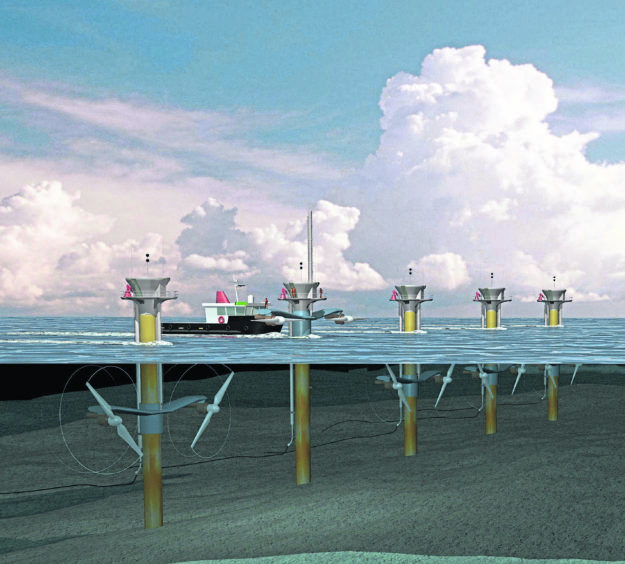
Offshore renewables schemes tailor made for their locations could be used to help develop industries such as whisky distilling and fish farming in remote coastal areas and islands, according to a new study.
Colin Palmer, head of marine at Crown Estate Scotland, which published the research yesterday, said it showed matching the right technology to the right setting offered “huge potential” for communities across Scotland to benefit.
The study explored six scenarios linked to a number of renewable technologies, such as floating wind, wave and tidal energy, and analysed how they could sport the growth of key industries.
The findings include a series of suggestions on how the public, private and community sectors can work together to bring down barriers to the development of local level offshore renewables.
Mr Palmer said: “This study emphasises that even in Scotland’s most remote locations there could be opportunities to develop energy solutions.
“Providing the right technology can be matched to the right setting, there is huge potential for communities across Scotland to benefit from a wide range of technologies suited to their needs.”
The study was welcomed by development agency Highlands and Islands Enterprise (HIE) which said it shared a “common interest” with Crown Estate Scotland in realising the benefits from offshore renewables in coastal communities.
HIE’s director of energy and low carbon, Audrey MacIver, added: “Understanding the potential for emerging technologies, such as wave, tidal and floating wind, to contribute towards a more local, low carbon decentralised energy system is a helpful step forward in facilitating both community engagement and in driving forward the commercial development of these technologies.”
Crown Estate Scotland manages seabed leasing, as well as just under half the Scottish Coastline.
The organisation commissioned consultancy Everoze to carry out the study.
It said the aim of the work was to deliver an “initial high-level investigation” of the localised use of offshore renewables and deliberately did not give any timescale for the development of schemes.
One of the scenarios considered by the Crown Estate Scotland study was a six-megawatt tidal renewable energy development connecting into a large island with significant industrial users, including four whisky distilleries as well as agriculture and fishing.
Another looked at connection of a two-kilowatt device to a small, remote island, which would also supply energy to a fish farming operation.
Other scenarios included a tidal array with battery storage providing and alternative to a grid upgrade and a large scale floating wind generation scheme with offshore electrolysis and use of gas pipelines.
The study found that: “Some scenarios demonstrate potentially realisable benefits, with wave to aquaculture the most promising over the short term. In others, the scenarios are potentially viable, if wave and tidal costs fall substantially.”
It added that the “focus should be on scenarios with higher value revenue streams – higher revenue stream can provide a niche that can support the additional cost of generating using early stage offshore renewables.”
The researchers found that, at present, there is “no real incentive” to select offshore renewables over proven onshore alternatives.
They wrote: “Even when there is potential, there is limited rationale as to why wave and tidal would be chosen over more mature (and cheaper) technologies such as solar and wind.”
The study also noted that: “Many remote communities are already heavily engaged in the development of localised energy systems and the infrastructure and capabilities are in place to further extend these activities to include offshore renewables.
However, communities will need to be convinced of the benefits of adopting immature technologies.”
Crown Estate Scotland said it will carry out further work to identify communities where projects could potentially be delivered.
Recommended for you
